What is Founder in Horses? Signs. Prevention. Treatment.
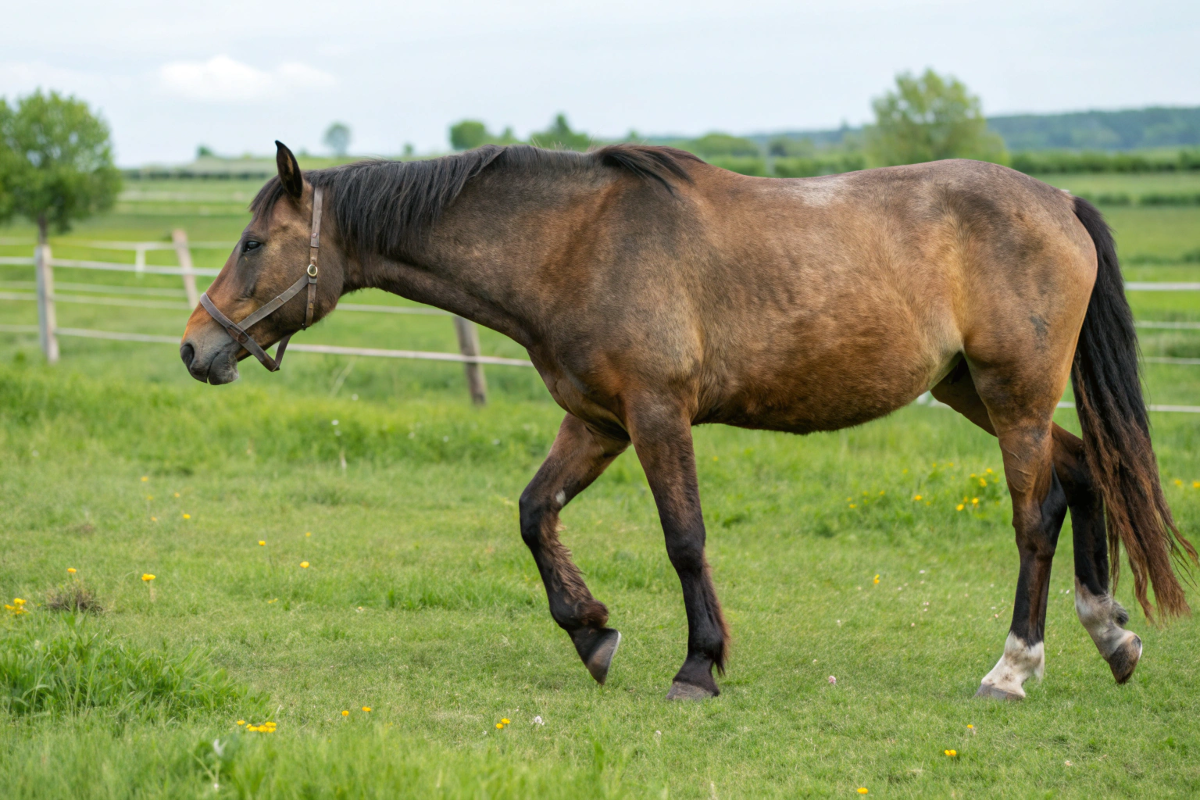
If you’ve been around horses long enough, chances are you’ve heard the term “founder” used in hushed tones and with genuine concern. So, what is founder in horses? In simple terms, it’s one of the most painful and potentially debilitating conditions a horse can experience. Scientifically known as laminitis, founder affects the sensitive laminae inside the hoof, where the hoof wall attaches to the coffin bone. When inflamed or damaged, this connection weakens, causing extreme pain and potentially permanent structural damage.
Understanding the Hoof: The Foundation of Equine Health
A horse’s hoof is an engineering marvel—complex, sensitive, and essential. At the heart of it lies the laminae, a network of soft tissues that attach the hoof wall to the underlying coffin bone. This connection bears the full weight of the horse’s body and absorbs the concussion from every stride.
In horses suffering from founder, inflammation causes the laminae to deteriorate. This can lead to rotation or sinking (foundering) of the coffin bone, an extremely painful and sometimes irreversible condition.
It’s worth noting that laminitis refers to the inflammation stage, while founder is typically used to describe the later stage where structural changes have occurred. However, many horse owners use the terms interchangeably.
Common Causes of Founder in Horses
Understanding the causes of founder is critical to prevention. Some of the most common triggers include:
-
Poor Nutrition
Overfeeding, especially rich feeds high in starches and sugars, can disrupt gut flora, trigger endotoxins, and contribute to laminitis.
-
Sudden Access to Lush Pasture
Horses suddenly turned out on rich spring grass—especially those not accustomed to it—can quickly develop founder due to the high levels of fructans.
-
Obesity and Insulin Resistance
Just like humans, horses can suffer from metabolic disorders. Insulin dysregulation, in particular, is linked to pasture-associated laminitis.
-
Mechanical Trauma
Also called “road founder,” this occurs when horses work on hard surfaces for prolonged periods, especially if unshod.
-
Illness or Infection
Systemic infections or retained placentas in mares can lead to toxic laminitis as inflammatory compounds circulate through the body.
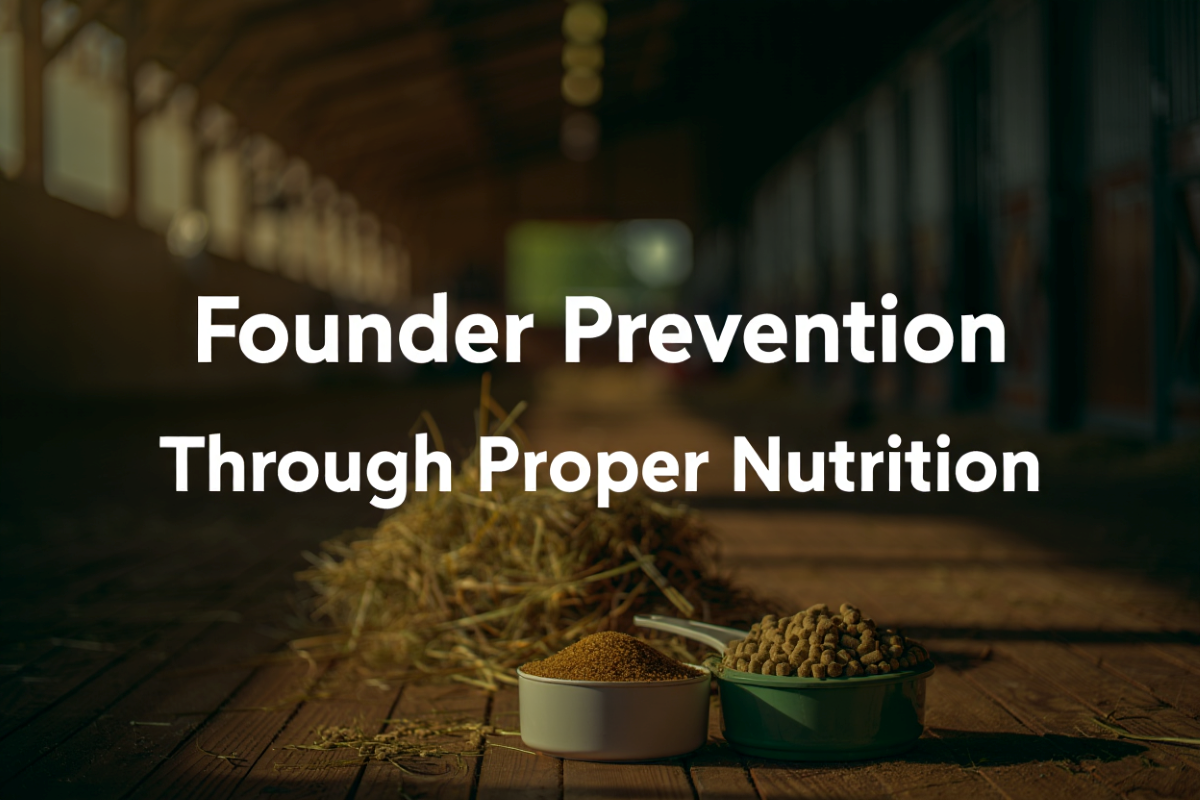
The Role of Forage in Preventing Founder
The importance of forage vs. feed cannot be overstated when it comes to preventing and managing founder. Forage refers to the fibrous, natural plant-based diet that horses are evolved to eat—think of grass, hay cubes, and forage pellets.
While animal feed like grains and concentrates may have a place in certain management systems, it should never be the foundation of a horse’s diet. Horses are designed to graze. Therefore, forage is not just filler—it’s the main event.
High-Quality Forage Cubes for Performance Horses
For horses in hard work—racehorses, eventers, dressage athletes—high-quality forage cubes are essential. These compacted cubes provide dense nutrition, are easier to store than baled hay, and better maintain nutrient integrity. For horses prone to founder or already managing the condition, forage cubes offer consistent, digestible fiber that supports gut health and metabolic stability.
Pellets as a Supplement, Not a Replacement
Forage pellets are a great option to supplement an existing forage base. They provide added nutrients and calories, but should not replace long-stemmed forage sources entirely. However, when softened with water, they are invaluable for horses with dental issues.
Soaking Forage Products: When and Why
Soaking forage cubes or pellets for 30 minutes (or until softened) can significantly reduce dust and make them easier to chew and digest. This is especially helpful for older horses, those with dental problems, or horses at risk of choke. While soaking is not mandatory, it is recommended for safety and digestibility.
Recognizing the Signs of Founder
Early detection of founder can mean the difference between recovery and permanent damage. Look out for:
- Reluctance to move or a “walking on eggshells” gait
- Shifting weight from foot to foot
- Lying down more frequently than usual
- Strong digital pulse in the fetlock area
- Hot hooves
- Characteristic stance: leaning back onto the hindquarters to relieve front hoof pressure
If you notice any of these symptoms, call your veterinarian immediately.
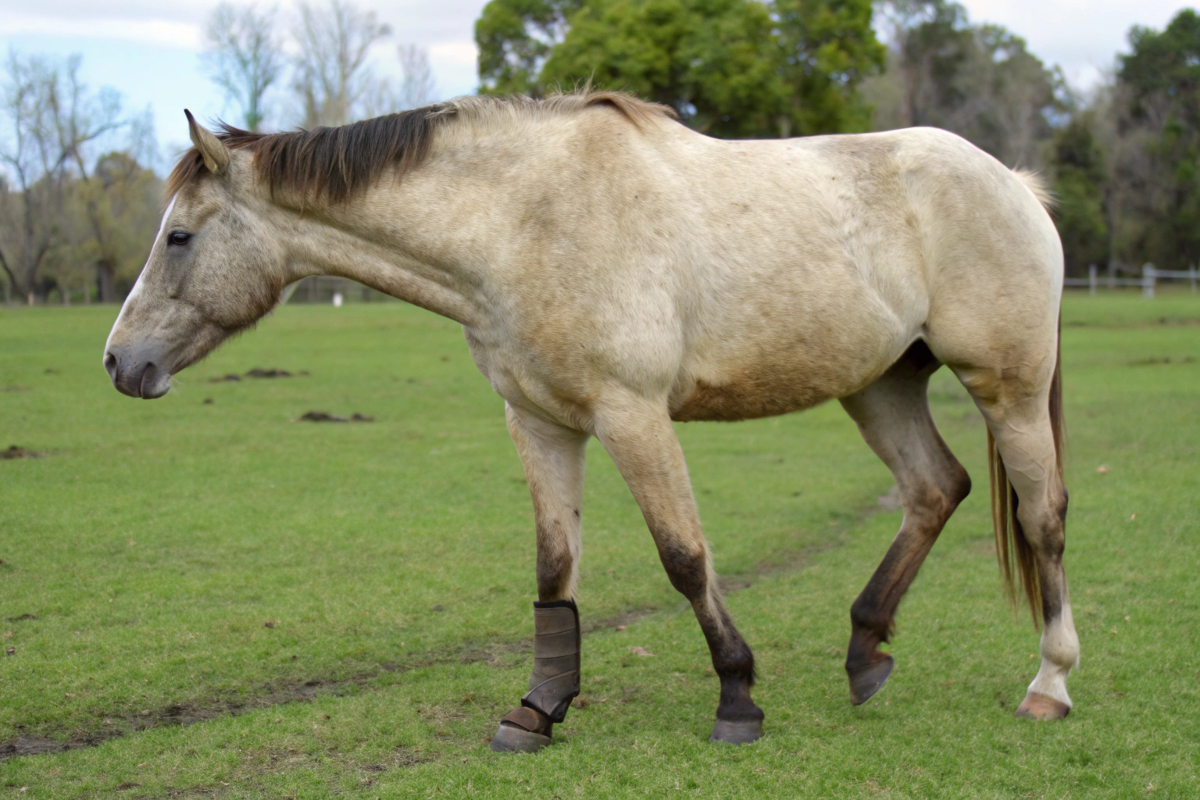
Managing a Horse with Founder
Veterinary Care and Farrier Involvement
Treatment should always begin with a vet visit. Radiographs help determine the extent of damage. Corrective shoeing by a knowledgeable farrier can support the hoof and limit further rotation of the coffin bone.
Stall Rest and Bedding
Soft bedding is crucial. Chopped straw or pelleted straw bedding offers comfort and support without the risk of ingesting harmful materials. Bagged bedding products provide consistent quality and reduce exposure to allergens and contaminants.
Controlled Diet
- Eliminate rich feeds and sugary treats.
- Avoid lush pasture, particularly in spring and fall.
- Rely on high-fiber forage products like cubes and pellets.
- Consider low non-structural carbohydrate (NSC) forage options.
Feeding smaller, more frequent meals and maintaining consistent forage availability will help stabilize blood sugar levels and minimize laminitic flare-ups.
Founder in High-Performance Horses
You might think founder affects only pasture pets or ponies, but the truth is, even high-performance horses are vulnerable. Intense training, high-calorie diets, stress, and travel can all contribute to metabolic imbalances and increased inflammation.
That’s why owners, trainers, and caretakers of athletic horses need to ensure the base diet is composed of high-quality forage cubes, with pellets serving as targeted nutritional support.
Feeding performance horses isn’t about stuffing them with grains—it’s about fueling them intelligently with consistent fiber, hydration, and nutrients. With founder, prevention is always preferable to treatment.
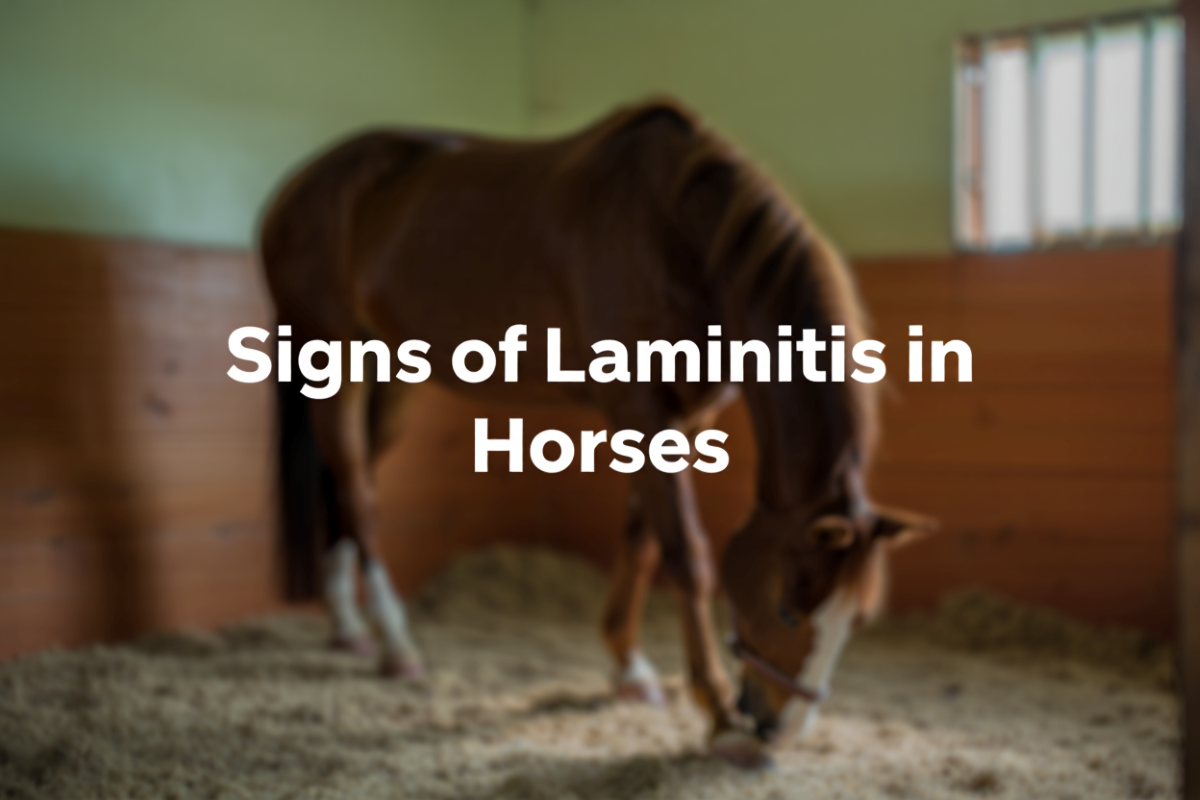
The Link Between Gut Health and Laminitis
Did you know that a horse’s digestive system plays a central role in laminitis risk? Sudden changes in diet, especially those involving high-starch feeds, can upset the microbial balance in the hindgut. This imbalance leads to the release of endotoxins, which circulate in the bloodstream and trigger inflammation in the laminae.
Fiber-rich forage promotes a healthy gut microbiome, ensuring stable fermentation and minimizing spikes in insulin and blood sugar. Forage cubes and pellets offer a clean, digestible form of roughage that supports this microbial environment. The more consistent the fiber intake, the more stable the metabolism.
Managing Weight and Founder Risk
Obesity and founder go hand in hand. Overweight horses have increased strain on their hooves and are more likely to be insulin-resistant, a key factor in laminitis.
Here’s how to keep weight in check:
- Choose low-NSC forage pellets and cubes.
- Implement slow-feeding strategies.
- Provide consistent exercise, even if low impact.
- Avoid pasture during high-risk seasons (spring and early fall).
Forage cubes can be weighed and portioned with precision, allowing for better weight management compared to guessing bale quality or size.
![]()
Why Horse Owners Trust Greenway Animal Nutrition
At Greenway Animal Nutrition, we recognize that high-quality feed is essential for maintaining healthy, well-nourished horses. That’s why we’ve dedicated ourselves to crafting forage products that meet the diverse needs of horses across all lifestyles—from pasture companions to elite equine athletes.
Our forage cubes are designed to provide superior nutrition in a convenient, easy-to-feed format. Our cubes are sourced from premium roughage and manufactured carefully, maintaining optimal fiber structure and nutrient integrity.
Our forage pellets serve as the perfect supplemental feed—ideal for mixing into daily rations, offering additional energy, or aiding horses with special dietary requirements.
What sets us apart?
- Consistent quality, batch after batch
- No dust, mold, or foreign matter
- Options suitable for metabolic horses
- Products that support both digestive and hoof health
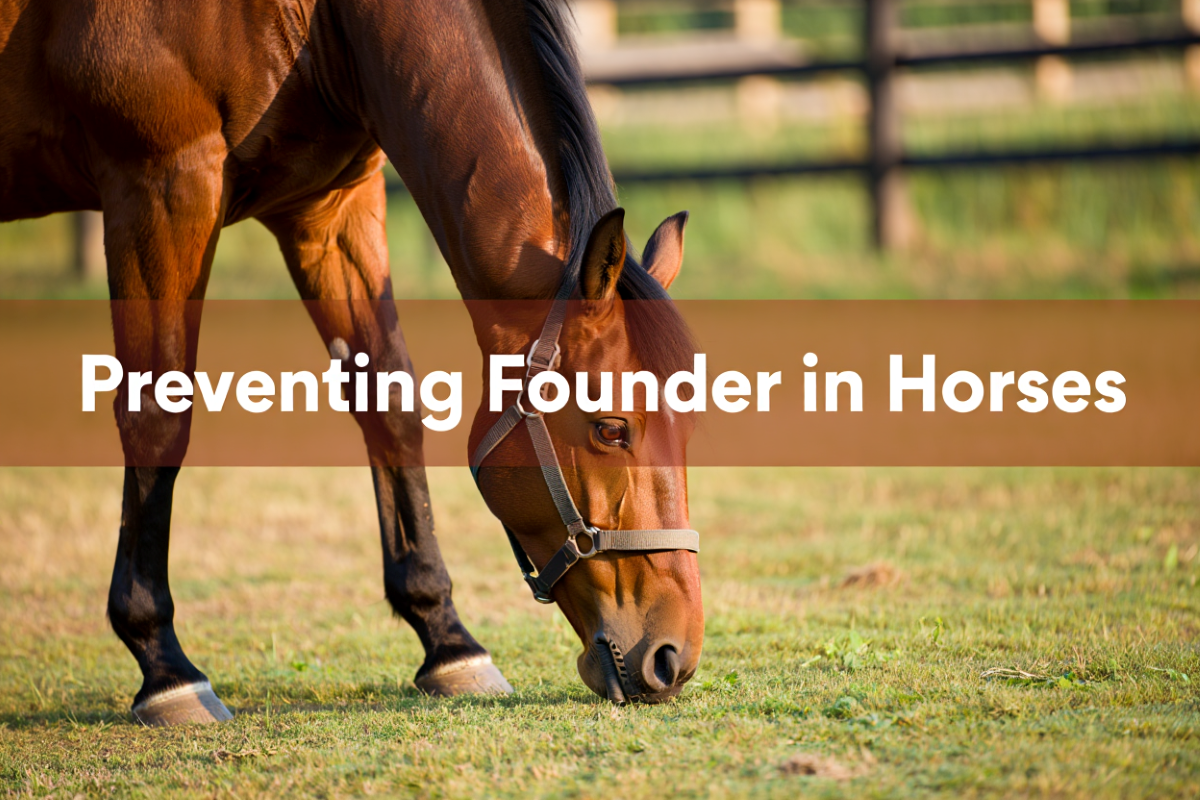
Prioritize Forage to Prevent Founder
So, what is founder in horses? It’s a potentially devastating condition rooted in inflammation of the sensitive laminae of the hoof. While it can stem from various causes—diet, obesity, trauma, or illness—the one constant in prevention and management is nutrition.
That means understanding the vital role of forage vs. feed, choosing the right cubes and pellets, and adjusting care practices to support both metabolic and hoof health.
If you’re looking for a dependable source of high-quality forage products, don’t take chances—go with a name horse owners trust.
![]()
Partner With Greenway Animal Nutrition
At Greenway Animal Nutrition, we believe in giving back—to horses, to owners, and to the wider equine community. Our culture is rooted in care, quality, and compassion. Whether you’re managing a high-performance stable, a breeding farm, or a single special horse, we’re here to help you make the best nutritional decisions.
Explore our premium forage cubes and pellets, which are ideal for horses at every stage of life. We’re proud to offer clean, consistent, and tailored products to support hoof health, weight management, and peak performance.
Reach out to us today to learn more about how Greenway Animal Nutrition can help you keep your horses healthy, sound, and thriving.